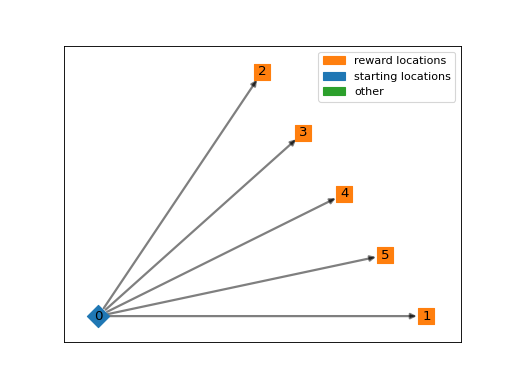Risk-Sensitive Decision Making Task
This task is greatly inspired by Niv et al. [2012] and slightly adapted towards the second task done in mice described in Dabney et al. [2020].
See description below.
For this project the graph structure is the following:
Or in graph form:
(Source code, png, hires.png, pdf)

Task description
In this task, participants are asked to either select one of two gambles or to just select a single forced choice stimulus.
There are currently three gambles in total, with different probabilistic outcomes.
Participants are presented with either a choice, where they select one of two gambles using left or right or a single gamble, that they select with left.
The graph is controlled by the condition parameter, that indicates either the
two gambles on display (or a single gamble for that matter).
As can be seen by the graph, the setting here is slightly different than in the other tasks, in that separate actions are associated with each individual gamble. In practice the actions (left or right) are remapped to indicate the selection.
Will Dabney, Zeb Kurth-Nelson, Naoshige Uchida, Clara Kwon Starkweather, Demis Hassabis, Rémi Munos, and Matthew Botvinick. A distributional code for value in dopamine-based reinforcement learning. Nature, 577(7792):671–675, January 2020. doi:10.1038/s41586-019-1924-6.
Yael Niv, Jeffrey A. Edlund, Peter Dayan, and John P. O'Doherty. Neural Prediction Errors Reveal a Risk-Sensitive Reinforcement-Learning Process in the Human Brain. Journal of Neuroscience, 32(2):551–562, January 2012. doi:10.1523/JNEUROSCI.5498-10.2012.